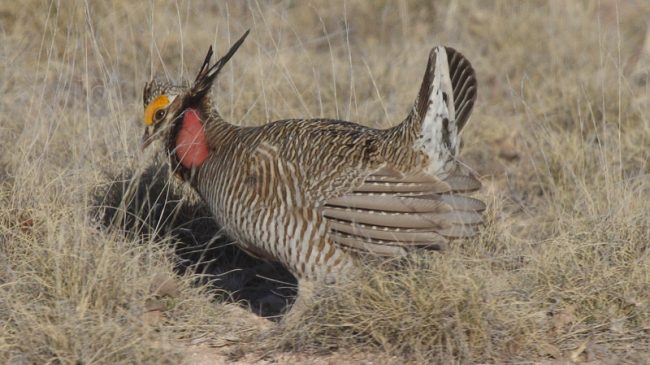On March 27, the long-held fears of the oil and gas industry, various state governments, and thousands of landowners were confirmed when the lesser prairie chicken was listed under the Endangered Species Act. The lesser prairie chicken, a member of the grouse family, has much of its habitat in the Permian Basin of West Texas and Eastern New Mexico, a region that just happens to produce 15 percent of all U.S. oil and five percent of U.S. natural gas.
In order to conserve the prairie chicken, U.S. Fish and Wildlife needs a plan.
Landowners, along with oil and gas companies, fear U.S. Fish and Wildlife could require a separate “mitigation plan” for every new oil and gas well to reduce impact on the prairie chicken and its habitat. With around 500,000 new wells forecast for the Permian Basin over the next 30 years, the potential disruption to oil exploration and production is massive. To avoid the regulatory uncertainty and expense that would result, the oil industry, landowner groups, and states in the prairie chicken’s range have developed plans that would conserve the bird and create a predictable mitigation process.
For these plans to be viable, however, they require approval from Fish and Wildlife.
So far, only one plan, the Range-wide Conservation Plan, has received approval. But it was based on the unrealistic idea that it could prevent the prairie chicken from being listing under the Endangered Species Act and has significant problems.
The Range-wide Plan lacks transparency, oversight, and meaningful landowner input, is massively expensive (approximately a quarter of a billion dollars for the first 10 years, including $2.25 per acre for land enrolled, and up to $103,000 per well site), and targets 25 percent of land for permanent conservation easements. Furthermore, under this plan no prairie chicken conservation will occur for one year after implementation while mitigation fees are collected. For a species whose population has declined by an estimated 50 percent over the past two years, waiting another year may be too late.
The alternative Stakeholder Conservation Strategy, which the federal government estimates approving in December 2014, would be better for the prairie chicken. It was written based on the realistic assumption that the bird will be listed and is backed by a broad coalition that includes two prominent environmental groups, the Nature Conservancy and Environmental Defense Fund.
It is more accountable, involves landowners in every step of planning and implementation, and is more cost-effective (36 cents per acre for land enrolled, approximately $11,250 per typical drilling site, and mitigation costs determined by a market-based bidding mechanism). It is also evidence-based: it is modeled on a successful effort in the mid-2000s to conserve the endangered golden-cheeked warbler and black-capped vireo on and around the U.S. Army’s Fort Hood in Central Texas. The Stakeholder Strategy is “a much more dynamic system,” according to David Festa of the Environmental Defense Fund, who said, “Instead of having the government set the price for conservation, we let the buyers and sellers set the price.”
Texas A&M University surveys show landowners strongly dislike permanent conservation easements, as contained in the Range-wide Plan, because they would require an eternal sacrifice of some of landowners’ property rights. They much prefer shorter-term conservation contracts of around five to 10 years, and having substantial decision-making authority – both of which are included in the Stakeholder Strategy. Landowners are the real key to effective conservation because most endangered species, including the prairie chicken, live largely on private lands. Therefore, any effort to conserve endangered species must be sensitive to landowners’ concerns if it is to be successful.
Forty years of bitter experience under the Endangered Species Act shows that failing to take into account these concerns results in perverse consequences, such as landowners intentionally destroying habitat that might harbor endangered species so that they are not held to onerous federal rules.
These factors point toward an incentive-based approach to conserving endangered species such as the Stakeholder Strategy and away from the Range-wide Plan.
“Sticking to the Texas model offers the best approach,” said Kathleen White of the Texas Public Policy Foundation. “Protect property rights and market dynamics, resist expansion of state government and encourage diverse, private, voluntary wildlife protection.”
If it is to be successful, endangered species conservation must move in this direction and away from top-down, inefficient initiatives that give short-shrift to landowners.
Brian Seasholes is director of the Endangered Species Project at Reason Foundation.
